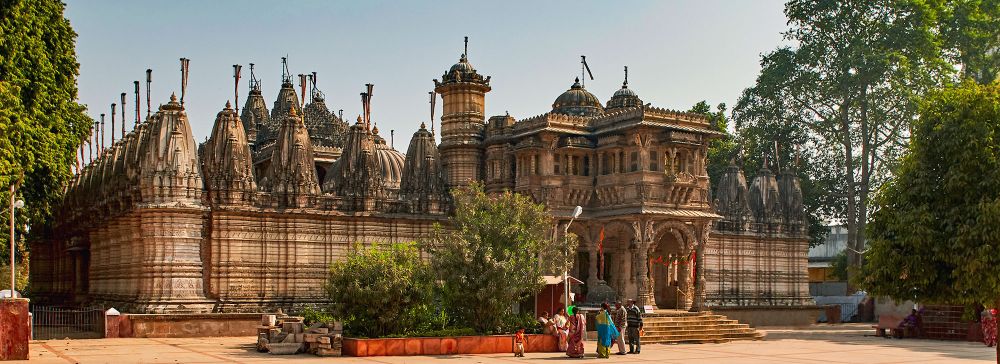

The Hathisingh Jain Temple, located in the bustling city of Ahmedabad, Gujarat, is a revered site for followers of Jainism and a popular attraction for tourists interested in the architectural splendor and serene ambiance of religious monuments. Dedicated to Dharmanath, the fifteenth Jain Tirthankara, this temple stands out as a significant example of Jain devotional architecture.
Built in the year 1848 by a wealthy Jain merchant, Seth Hathisingh, this temple has since attracted visitors due to its magnificent design and intricate carvings. Over the years, tourism to the Hathisingh Jain Temple has seen various phases, ranging from being a local place of worship to becoming an international point of interest.
In the early days, the temple's tourism was primarily fueled by pilgrims and local residents. As the city of Ahmedabad grew and became more accessible through developments in infrastructure, more tourists began to include the temple in their itineraries.
Over the years, the Hathisingh Jain Temple has featured in several travel guides and publications, which has helped in boosting its popularity among tourists from all over the world. The temple is now considered an important part of heritage walks in Ahmedabad, which are organized to showcase the historical and cultural vibrancy of the city.
The temple is renowned for its intricate carvings and pure white marble construction, which displays the characteristic Jain artistry. Its architecture is inspired by the Jain temples of Palitana and Girnar, with its meticulous detailing and sprawling courtyard leaving visitors in awe. The craftsmanship displayed in its construction reflect the temple’s rich heritage and the deep religious sentiments of its devotees.
In recent years, there has been a significant shift in the way tourists approach destinations like the Hathisingh Jain Temple. Visitors are now increasingly interested in experiential travel—looking to engage with the local culture and history more intimately. To cater to this trend, guided tours that tell the story of the temple, its significance in Jainism, and its role within the broader context of Ahmedabad's history have become popular.
Moreover, sustainable and responsible tourism is gaining ground, with tourists showing greater concern for preserving the sanctity of religious and historical sites. Efforts are being made by both government and local communities to ensure that visits to the Hathisingh Jain Temple are conducted in a way that respects the religious practices and maintains the site's integrity for future visitors.
Visitors to the temple can marvel at its beauty and tranquility from early morning until sunset with free entry. Photography might be restricted within the temple premises to maintain the sanctity of the space. The best time to visit is during cooler months from November to February when the weather in Ahmedabad is pleasant.
As part of the local Government’s tourism efforts, the temple surroundings are well-maintained, and amenities such as signboards, information centers, and cleanliness campaigns are consistently improved to enhance the tourist experience.
For those looking to explore the religious and architectural heritage of Gujarat, the Hathisingh Jain Temple stands as an unmissable destination. Its historical legacy, coupled with the peaceful spiritual setting, offers a unique journey into Jain philosophy and the communal life of Ahmedabad’s residents through the ages.